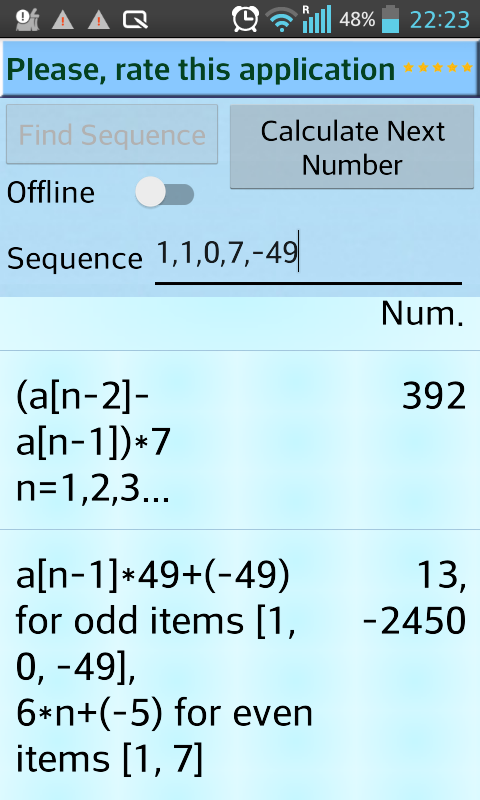
NUMBER SEQUENCE CALCULATOR ONLINE HOW TO
Learn the complete fibonacci sequence concept from this fibonacci calculator and also understand the steps on how to find fibonacci series manually with steps from below solved example.įind the fibonacci sequence number for F 46?īy applying the formula of fibonacci sequence ie., F n = ( (1 + √5)^n - (1 - √5)^n ) / (2^n × √5), we can easily calculate the exact result.į 46 = ( (1 + √5)^46 - (1 - √5)^46 ) / (2^46 × √5)į 46=(1.61803.)^46−(−0.61803.)^46 / 2^46 X√5

For example, you can engage students in conversations about counting objects and using numerical order to keep track. Real-life scenarios provide a context where students can apply their knowledge of number sequences. Students can compete in this game and make it more interesting and engaging. One such game is “What’s the next number?” In this game, you can show the students a sequence of numbers, and then ask them to figure out what the next number would be in the sequence. Using games is an excellent way to make learning number sequences more engaging. Simple visuals like these can help students understand the clarity of the sequence and its relevance.

You can also use colored circles or squares to create a visual representation of the sequence. For example, if you are teaching students the sequence 1, 2, 3, 4, 5, you could create a staircase with each step representing a number in the sequence.

One of the best ways to introduce number sequences to students is to help them create visual representations of the sequence. Create a visual representation of a number sequence:

In this article, we will explore activities that can be used to teach students number sequences.ġ. Teaching students number sequences requires patience, creativity, and the incorporation of interactive activities. In order for students to fully understand and excel in this subject, they must first grasp the concept of number sequences. Number sequences are an integral part of mathematics.


 0 kommentar(er)
0 kommentar(er)
